26 Mar Fall in love with your sloping garden
There’s no bigger challenge than a sloping garden, which is why the team at Tapestry Design Studios love them. In this blog we examine ways to deal with a sloping garden.
Why I like working with slopes
Slopes and contours add a whole new dimension to a garden. The same garden can take on different characters depending on where you are in it. Standing on top of the slope and looking down gives an entirely different impression of the space to standing at the bottom of the slope and looking up. And it’s different again when you’re neither up nor down.
But what I like most about sloping gardens is the engineering challenge. I love pondering over the different ways to sculpt the area so that it’s useable, beautiful to look, easy to maintain AND stable.
Two views from the same sloping garden in Colchester. Each view has a different focal point and encourages exploration.
First things first – assess the site
The first consideration with any sloping garden is to really know what you’re dealing with. So a thorough site assessment is crucial. How steep IS the slope? What is the soil like? What surrounds the garden? Where does the light fall? Are there any utilities such as drainage pipes or electrical cables to consider? What are the main view-points?
Next comes the owners’ needs and preferences. What is the wish list for this garden? A play area, a dining area? Secluded seating? Low maintenance, somewhere to keep hens or grow vegetables?
It may sound strange, but as a garden designer, the actual plants get thought about as the last stage of the design. On a sloping garden in particular layout and structure comes first. Closely followed by safety.
Safety on a sloping garden
Probably the most important thing to consider with a sloping garden is safe access. How will people using the garden travel from one part to another?
Bear in mind that paths and steps and resting areas are not just for mooching around enjoying the views. At some stage, somebody will need to get around with a mower, a wheelbarrow, a tray of tea and biscuits – maybe even a pram or a wheelchair.
So will it be steps be the best way to get up and down the slope, or would ramps be better? For wheelchair access, a ramp should be no steeper than 1:12. Will that fit into the garden? What materials should be used? How easy will steps or ramps be to use in the evening when the light is lower? Does this garden need built in lighting to make it safer?
Please excuse the unfinished state of this garden. Here we’ve contoured a sloping garden into two terraces with a gentle slope between them. Sturdy steps give good access and the slope has been planted with a wildflower meadow mix for easy maintenance. This garden was built for us by Holland Landscapes
Improving the contours of a sloping garden
When a garden slopes steeply, to make it useable and easy to maintain, there is only really one option – creating some flat terraces. How many terraces and how wide they are is largely dictated by the angle of the slope and of course by the available budget.
Flattening out areas inevitably means groundworks and then creating some sort of retaining wall to prevent soil slippage. Groundworks are brilliant fun, but there is a cost involved and that needs to be thought about from the outset.
If the slope is not too steep for maintenance and if it’s reasonably stable, why not embrace it and turn it into a feature? For a gentle slope, a series of slopes or gentle undulations can be really effective.
This sloping garden is typical for our area. It’s difficult to mow the grass and not easy to access all areas. The garden as it is certainly doesn’t do the property justice and the view from the conservatry is uninspiring.
Contouring the garden, adding a stepped path and some easily maintained planting has made it so much more accessible and inviting. In this instance, re-contouring was more affordable than terracing and it gave the garden a soft, woodland feel that works well with the semi-mature trees in and around it.
The view from the bottom of a garden is just as important as the view from the top
Thinking about views and vistas
I love that there are so many ways to enjoy the view in a sloping garden – standing at the bottom and looking up or standing at the top and looking down. Being half way up and looking up, down and side to side. And of course, don’t forget the views from inside the house, from the kitchen, the living room and the bedroom. Any one plant looks completely different from below, from above and at eye level. I like to use steps, paths, ramps, different materials, planting and lighting to make fabulous vistas and views.
Just image having a seating area at the bottom of a slope with a pretty pergola to offer privacy from above. Now imagine looking down on the pergola roof and wondering what’s beneath it. You can’t do either of those things in a flat garden. And of course it offers a whole other exciting challenge – how to make a garden building look good from above.
In this garden a series of terraces makes the slope more manageable whilst creating and interesting journey around the garden.
Deciding the layout and style of a sloping garden
The layout of a garden dictates how it can be used. It also decides how it will look and feel. Horizontal lines in a sloping garden give a feeling of space and width. Meandering paths create intrigue and privacy.
Then there are focal points. I was watching a program with Monty Don on Netflix the other day. He was helping a couple in Salisbury remodel their small but steeply sloping garden. One of the things he pointed out to the couple was that the path they were planning to build for access to the garden needed to go somewhere. There needed to be a journey and a journey’s end. That’s important in any garden design.
So how will your sloping garden be laid out? As you travel through it, what will catch your eye and what will mark the end of your journey?
Final challenge
The final challenge for me is related to planting. The one thing I’ve not mentioned so far in this blog is water – or drainage. Water is essential for plants. Drainage is essential for stabilising slopes. So there always has to be a compromise between the two. Even more so in a sloping garden than in a flatter one.
What you don’t want is a muddy puddle at the bottom of the slope. Neither do you want retaining walls to be pushed out by the pressure of all that soggy soil behind them. So choosing construction materials and making sure that they are properly installed are paramount to the permanence of a sloping garden.
However, water will run down a slope very fast indeed. It’s a problem that designers of living green roofs have to consider every day. How to have enough water available for the plants without compromising the stability of the structure.
Any retaining walls need to have drainage outlets at their base and then that water needs to be directed somewhere that it won’t be a nuisance. Plant choices need to bear in mind that drought could be an issue at times – either that or irrigation systems can be built in to the design.
For help in designing your sloping garden
I love the challenges and the opportunities of a sloping garden. And the feeling that comes from making a sloping garden accessible for every family member is second to none.
If you would like help with your garden design, please do get in touch. Size is not an issue, you don’t need a big garden or a huge budget to hire a garden designer. Explore our website to find out more about our garden design packages.




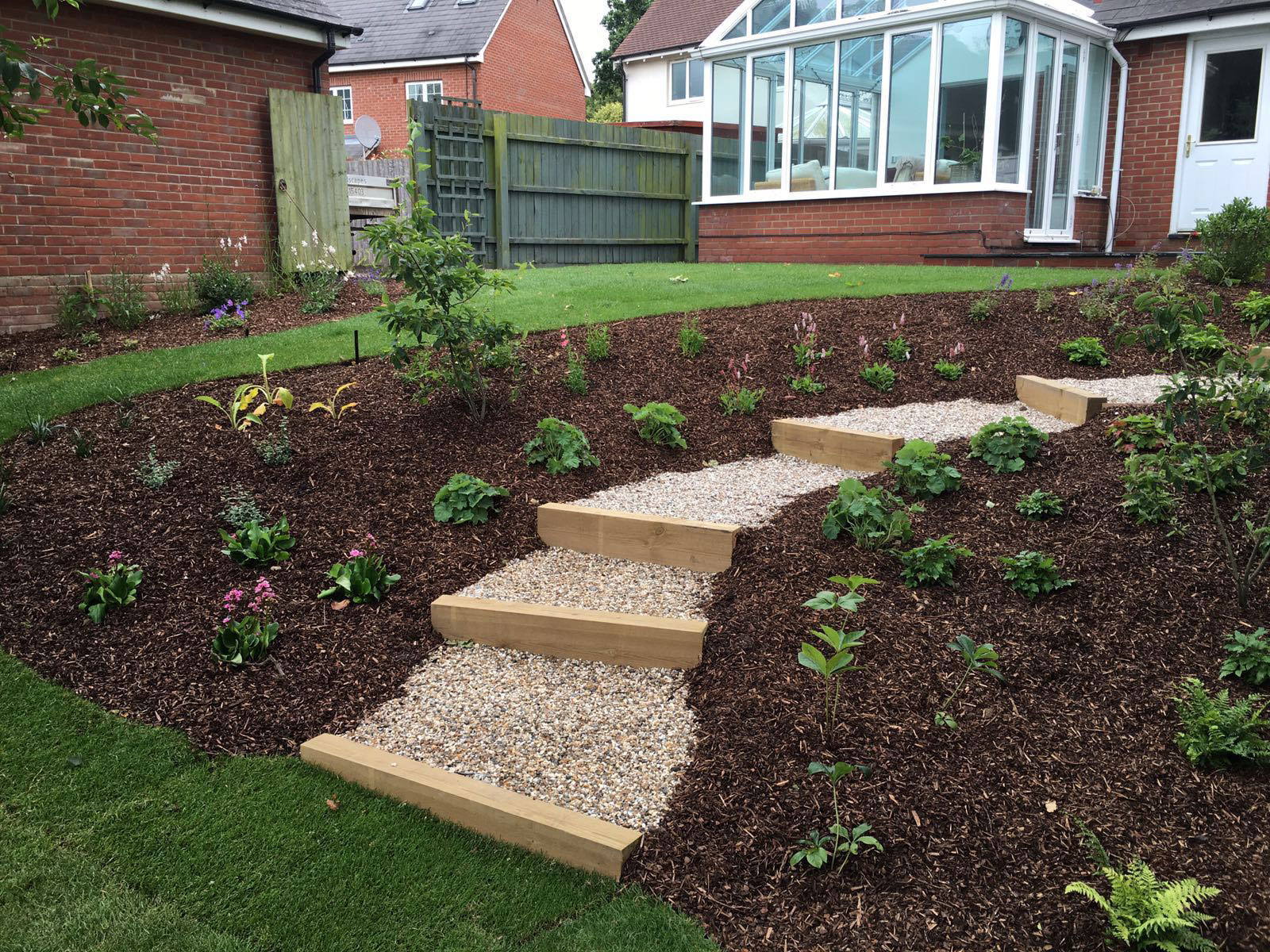
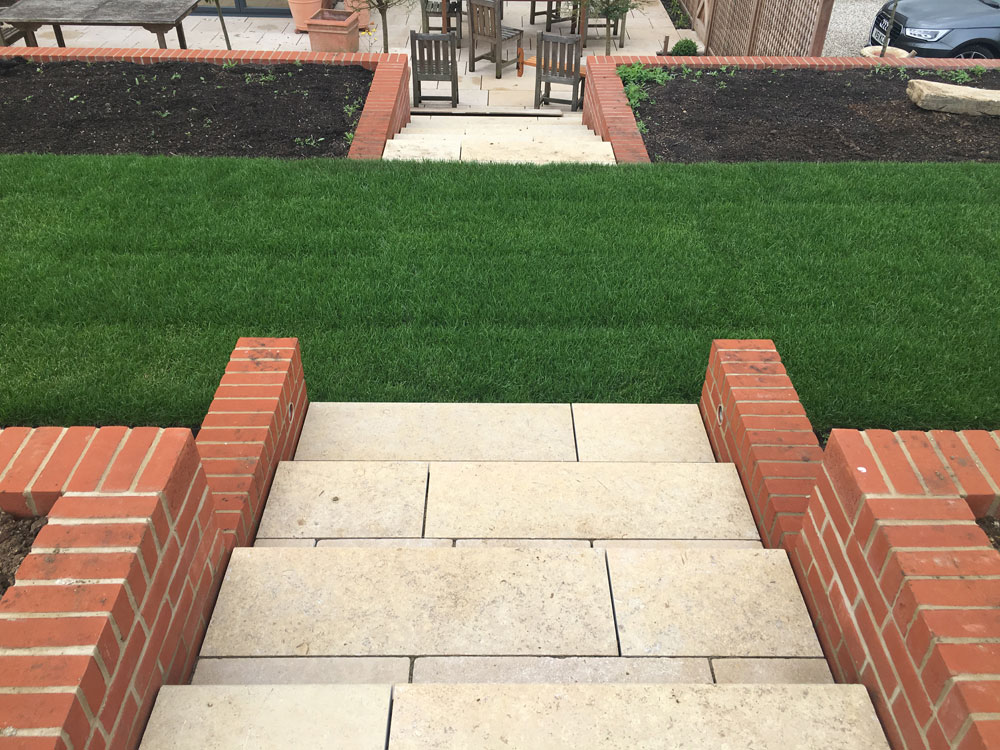
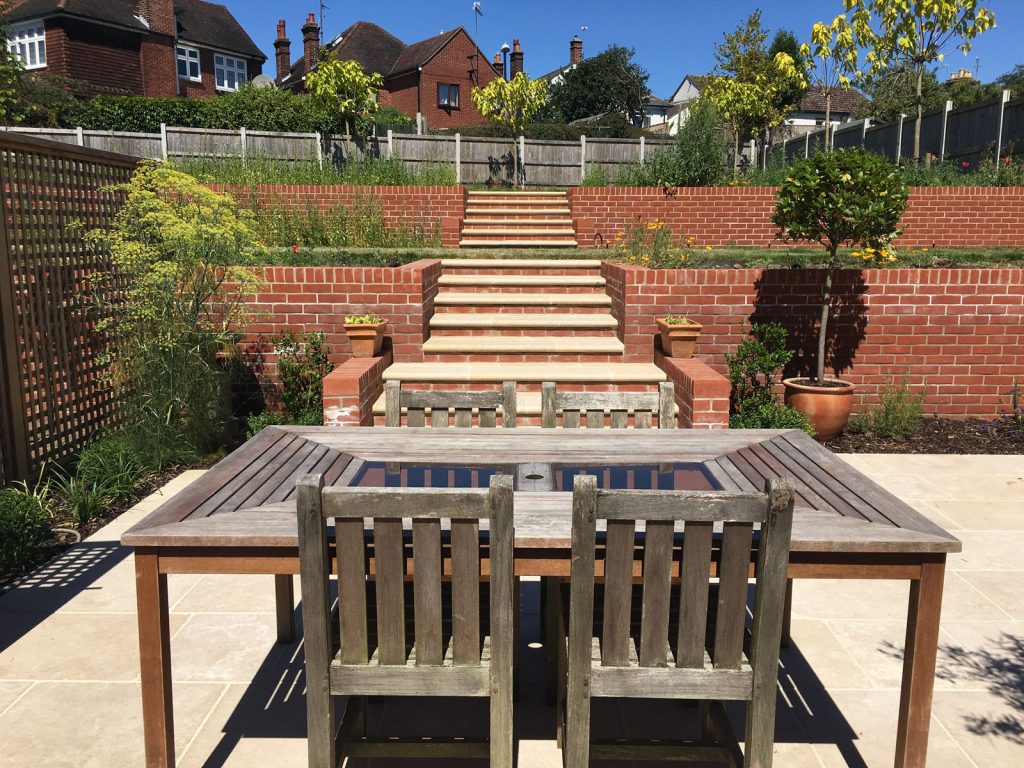
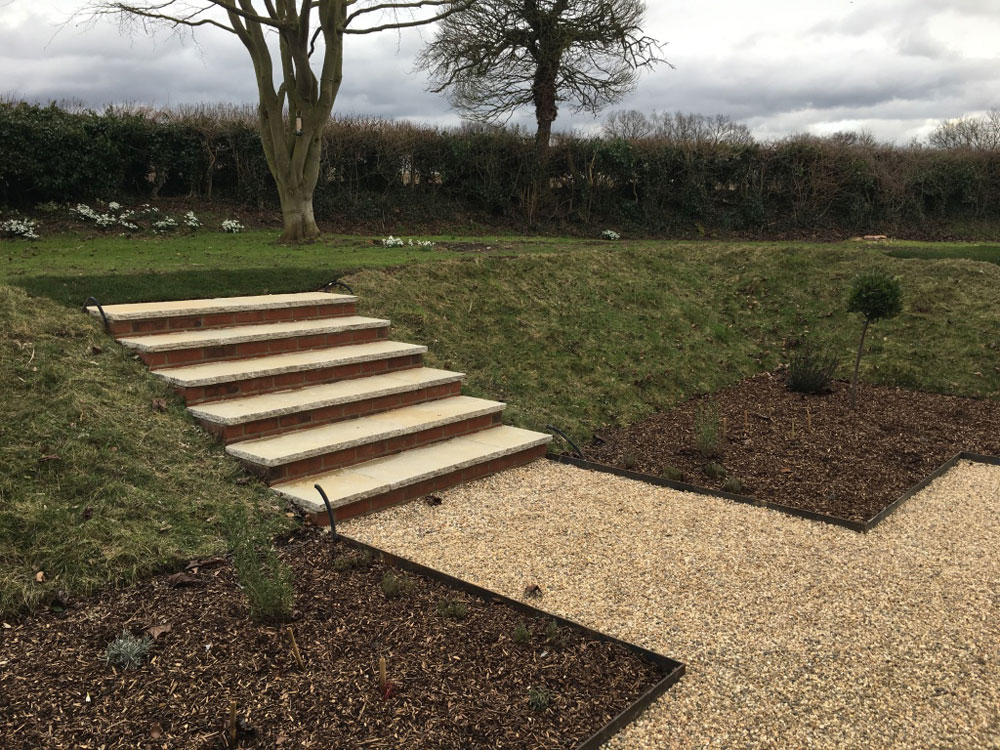
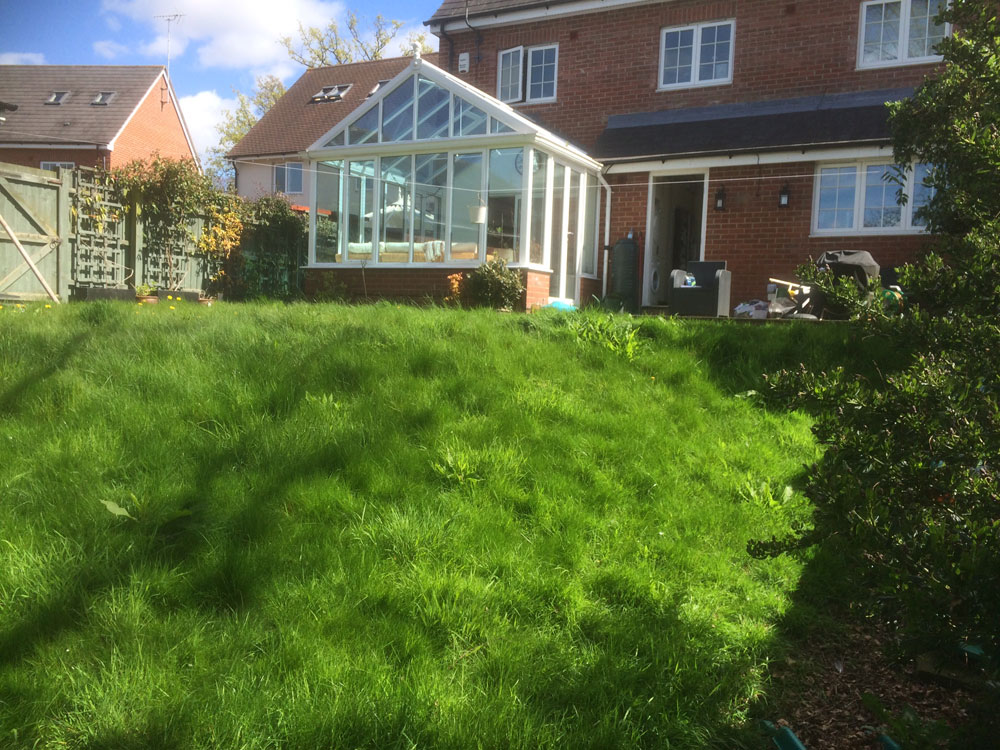
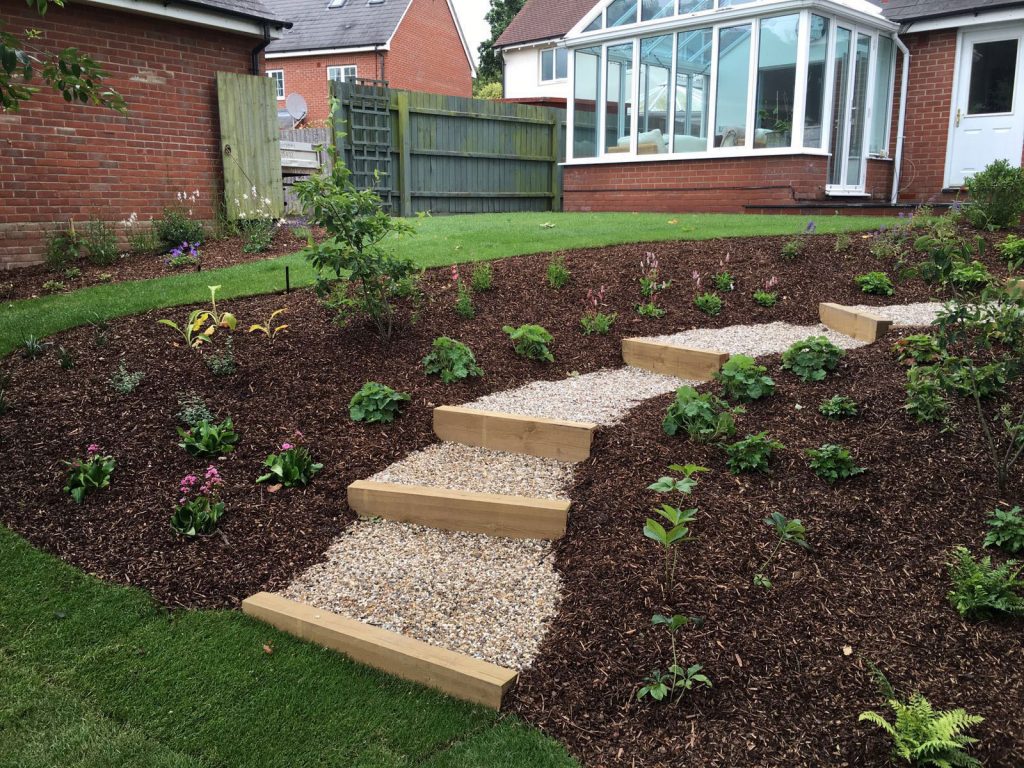
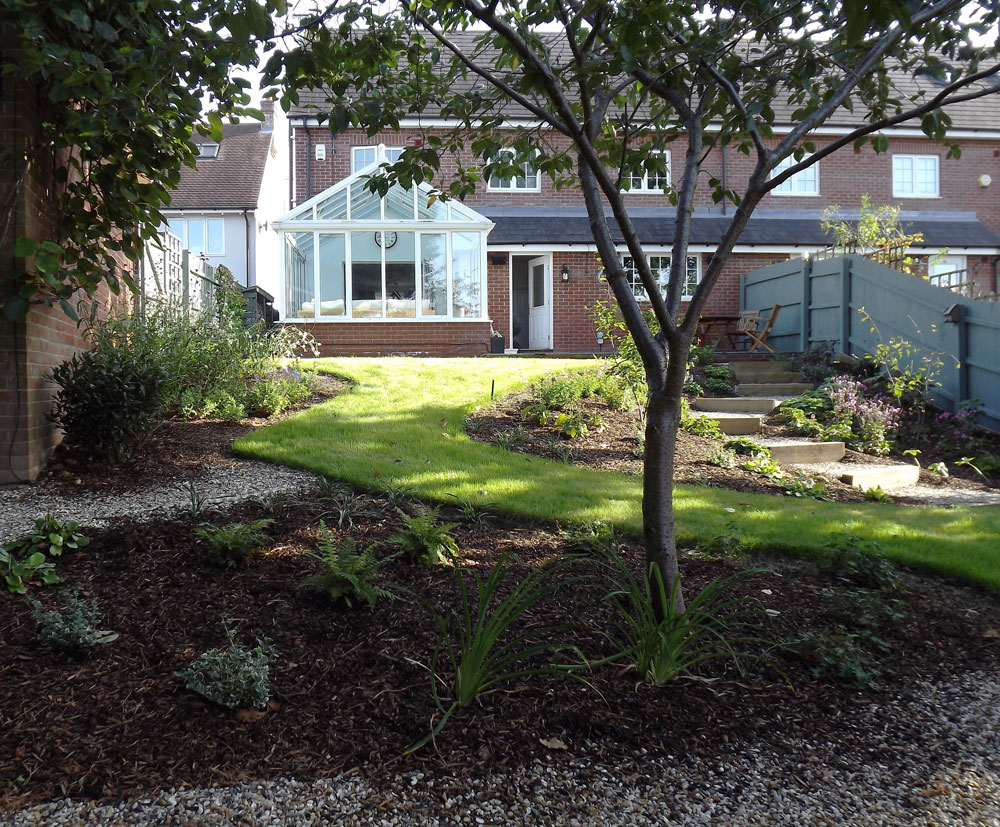

Sorry, the comment form is closed at this time.